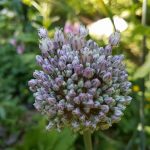Growing Nutrient Rich foods by Building Healthy Soils
Summary:
The majority of Canadians are deficient in 3 or more essential nutrients.
We can grow food that is more nutrient-rich.
Nutrient-rich foods have more vitamins, minerals, and antioxidants.
We can maximize the nutrient density of our food by focusing on building healthy soils.
Healthy soils are rich in Organic Matter and host a diversity of microbial life.
Problem Statement:
Research indicates that Over 90% of Canadians are deficient in at least one vitamin.
The majority of Canadians are deficient in 3 or more essential nutrients.

The most common deficiencies are Vitamin D, Calcium, Magnesium, Vitamin A, Vitamin C, Zinc, Iron, and Iodine. (1) Some signs of nutrient deficiency include hair loss, increased susceptibility to viruses, slow healing of wounds, bone pain, heart problems, and deteriorating vision.
There are many reasons why Canadians may be deficient in nutrients. One is that Nutrient Density in our food has dropped since 1950. There are significant drops in nutrient ratings for protein, calcium Phosphorus, Iron, Riboflavin, and Ascorbic acid in our foods over the last 50 years (2).
Why have our bodies become nutrient deficient, our foods less nutrient dense?
There is an increased availability of calorie-rich but nutrient-poor foods, derived from corn and soy. There is another reason why our foods do not contain nutrients. Glyphosate, the active ingredient in Roundup is a mineral chelator. A mineral chelator binds up and makes essential minerals unavailable to plants. (3) Glyphosate can tie up micronutrients such as iron, zinc, manganese, boron, molybdenum and cobalt. It reduces the ability of plants to take up these minerals. In a field that has been sprayed with roundup, over 90% of plants tested with sap analysis are found to have molybdenum deficiencies. (4)
We can increase our consumption of nutrient-dense foods by growing our own food in Healthy Soil.
Healthy Soils = Organic Matter + Microbial Diversity
We maximize nutrient density by growing organically, with sufficient Organic Matter and minerals present in our soil. A healthy diverse soil food web turns those minerals into plant soluble forms.
Intro to Soil Health
Healthy soil is:
- Filled with organic matter (OM)
Organic matter is decomposing living materials. It is filled with microorganisms.
Humus is organic matter that has completely decomposed.
2. Filled with a diverse and healthy soil food web. (Living Soil)
A healthy soil food web means that we have a healthy amount and diversity of micro-organisms. These include Fungi, Bacteria, Protozoa, Micro Arthropods, and other creatures in our “micro-herd”.
Here are the management principles of Soil Health:
- Always keep the soil covered
Always keep the soil covered with Mulch or Living Roots.
2. Leave roots in the soil.
When removing plants, cut the plants and leave the roots in the soil
3. Minimize soil disturbance
Undisturbed soil is less compacted and uses capillary action to draw water deep from the soil. This leads to healthier and more drought-tolerant plants.
How to Build Garden Compost:
The best way to build organic matter is to “chop and drop” plants on top of the soil.
The traditional way of building compost is to gather a variety of materials including manures, leaves, garden waste, and other organic materials. The next step is to layer those materials about two parts “Brown” to one part “Greens”.
Examples of Brown Materials:
Leaves (Big Leaf Maple is the best!)
Deciduous Wood Chips
Hay or Straw
Animal Bedding
Ramial Woodchips
Examples of Green Materials:
Fresh Animal Manures
Green Garden Waste
Weeds
Grass Clippings
Coffee Grounds
Optional Amendments for Compost Piles:
Organic Alfalfa Meal
Rock Phosphate
Greensand
Azomite
Seaweed / Kelp Meal
Calcium Carbonate / Egg Shells / Gypsum / Dolomite*
* If adding Calcium to compost, add a layer of Peat or Humic Soil over the calcium layer. (5)
Adding Calcium can lead to some leaching of Nitrogen into the air.
Composting Systems for Fungal Diversity or “Orchard Composts”
The Bio Reactor composting method creates fungal-based compost without turning. A fungal compost is made with more woody materials, and has a slightly higher Carbon to Nitrogen Ratio; ideal for growing fruit trees.
For the purpose of this community garden demonstration, and the assumption that most of the gardeners are growing annuals, we will cover the simpler and more traditional bacterial- based composting method.
References:
1. Canada, Health. “Government of Canada.” Canada.ca, / Gouvernement Du Canada, 15 Mar. 2012, https://www.canada.ca/en/health-canada/services/food-nutrition/food-nutrition-surveillance/health-nutrition-surveys/canadian-community-health-survey-cchs/canadian-adults-meet-their-nutrient-requirements-through-food-intake-alone-health-canada-2012.html.
2. HD;, Davis DR;Epp MD;Riordan. “Changes in USDA Food Composition Data for 43 Garden Crops, 1950 to 1999.” Journal of the American College of Nutrition, U.S. National Library of Medicine, https://pubmed.ncbi.nlm.nih.gov/15637215/.
3. Mertens, Martha, et al. “Glyphosate, a Chelating Agent-Relevant for Ecological Risk Assessment?” Environmental Science and Pollution Research International, Springer Berlin Heidelberg, Feb. 2018, https://www.ncbi.nlm.nih.gov/pmc/articles/PMC5823954/.
4. Kempf, John. Quality Agriculture. 2020.
5. Steiner, Rudolph. “ 0:57 / 36:32 Four Substances and Forces in Human and Plant Nutrition By Rudolf Steiner.” YouTube, Rudolf Steiner Press Audio, 15 Jan. 2021, https://www.youtube.com/watch?v=Jhs-BwEiqo4&ab_channel=RudolfSteinerPressAudio.












